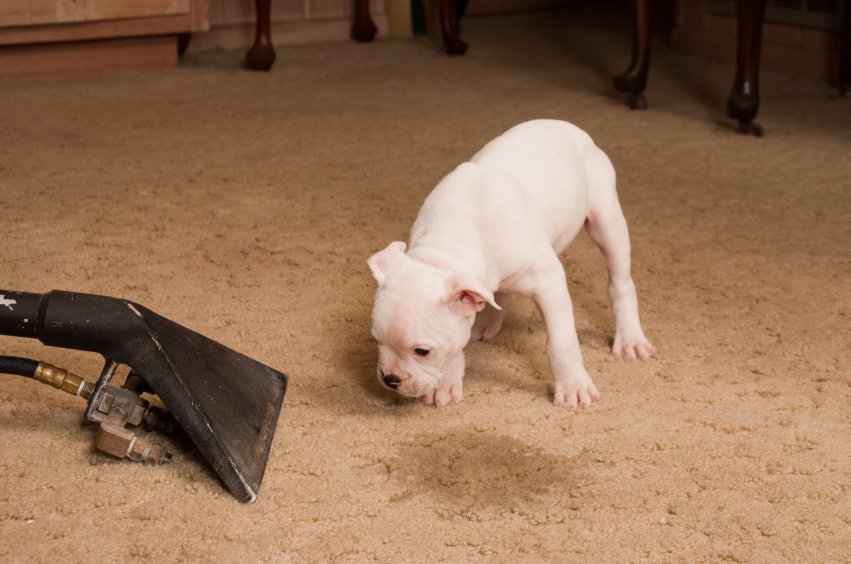Pet lovers cringe at the mere mention of the word “accident.” For households with toddlers and pets, accidents are a near-constant concern.
Fortunately, removing pet stains and smells from your home’s once-spotless carpets and furniture — and subsequently tidying up those fixtures as best as you can — doesn’t have to be a time-consuming, stressful or expensive process. But it does demand that you follow a process, step by careful step.
This guide assumes freshly laid (yuck) pet stains and odours. Older, ground-in messes may require more work. Also, remember that your pets may be trying to tell you something with their messes. If your pup or kitty seems to be vomiting more often than usual, for instance, it may indicate a potentially serious underlying condition that requires medical attention at one of your local animal hospitals or veterinary clinics.
Step 1: Determine the Extent of the Stain/Odor
First things first: you need to determine the extent of the problem. Spend some time outdoors or in another room far away from the source of the odor or stain. Then, enter the affected room and gaze upon the scene with fresh eyes (and nose).
If odor is the primary problem, determine the “acute zone” in which the actual deed occurred. If stain is the worry, use visual cues to determine the same. Keep in mind that, on darker coloured carpets, ascertaining the precise extent of a pet mess is tricky. And pinpointing the exact source of an odour is always an approximate science.
Step 2: Mix a Cleaning Solution
Depending on the type of surface you’re cleaning, you may need to go with a low-impact natural cleaning solution that won’t discolour or warp flooring or furniture material. Refer to a trusted guide for the appropriate materials and dilution instructions — e.g., so much vinegar to so much water. If you’re cleaning a hardier surface, a store-bought chemical cleaner may be fine.
Step 3: Test on an Out-of-the-Way Area
Always test your cleaning solution, whether pre-bottled or prepared in your kitchen, prior to widespread use. Do this in a small and/or inconspicuous area. Note how well the cleaner does its intended job and how, if at all, it affects the flooring or furniture material. If the cleaner doesn’t work or makes the problem worse, consider another method.
Step 4: Blot, Dry, Spray & Repeat As Needed
Once you’ve determined that your chosen remedy is safe and effective, blot and dry the affected area as instructed. Since stains and odours tend to go hand in hand, you’ll then need to spray some odour-neutralizer in the affected room (and possibly on the affected item, if safe). Wait a few minutes to allow the remedy to take effect, assess your work, and repeat as needed.
Step 5: Make the Area Unattractive to Mess-Makers
The final step: reducing the likelihood of future messes. While any realistic pet owner knows that there’s only so much one can do to keep Puppy or Kitty in check, simple steps such as closing doors to off-limits rooms, applying no-scratch solution to off-limits furniture and carpets, and practicing positive reinforcement when pets don’t make messes can all limit damage in future.
